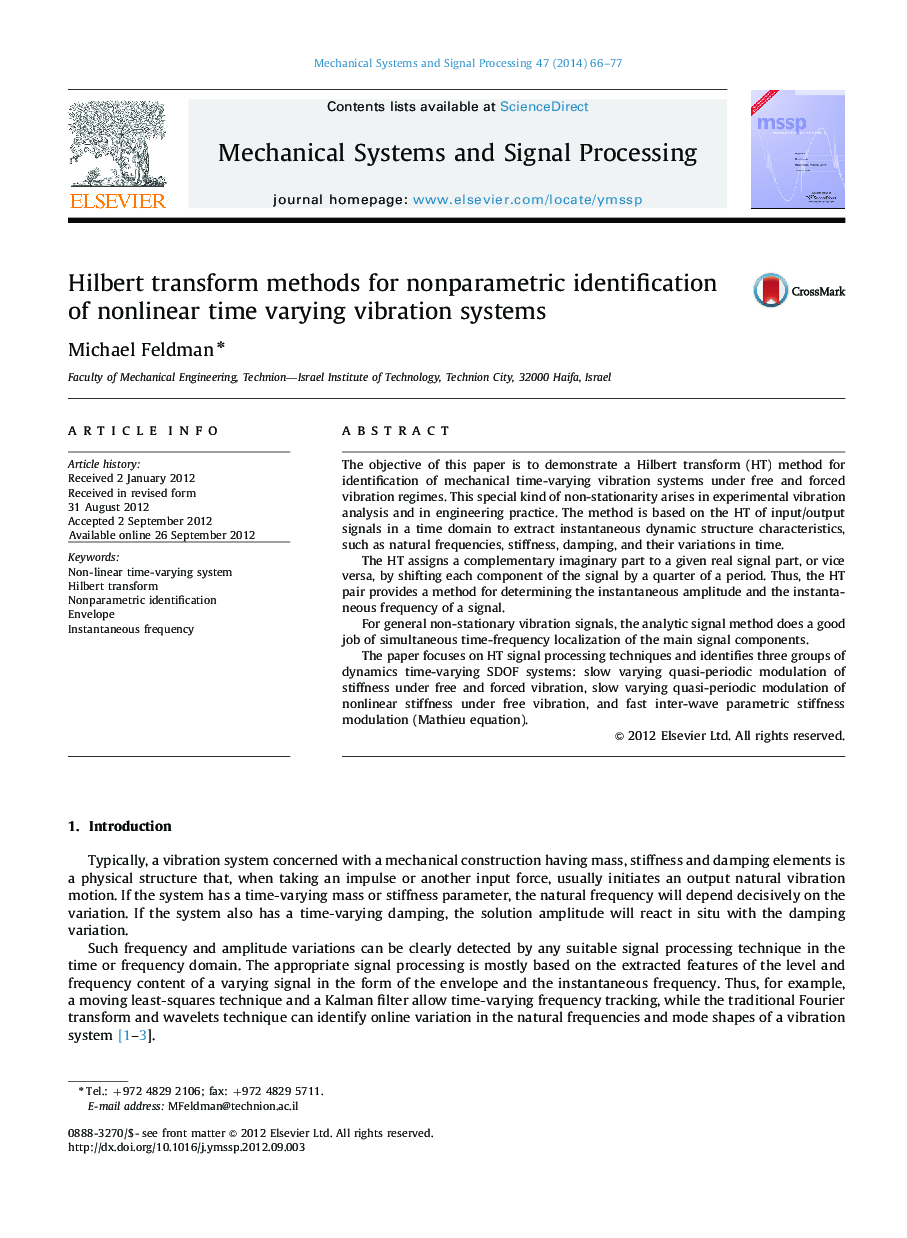| Article ID | Journal | Published Year | Pages | File Type |
|---|---|---|---|---|
| 560375 | Mechanical Systems and Signal Processing | 2014 | 12 Pages |
The objective of this paper is to demonstrate a Hilbert transform (HT) method for identification of mechanical time-varying vibration systems under free and forced vibration regimes. This special kind of non-stationarity arises in experimental vibration analysis and in engineering practice. The method is based on the HT of input/output signals in a time domain to extract instantaneous dynamic structure characteristics, such as natural frequencies, stiffness, damping, and their variations in time.The HT assigns a complementary imaginary part to a given real signal part, or vice versa, by shifting each component of the signal by a quarter of a period. Thus, the HT pair provides a method for determining the instantaneous amplitude and the instantaneous frequency of a signal.For general non-stationary vibration signals, the analytic signal method does a good job of simultaneous time-frequency localization of the main signal components.The paper focuses on HT signal processing techniques and identifies three groups of dynamics time-varying SDOF systems: slow varying quasi-periodic modulation of stiffness under free and forced vibration, slow varying quasi-periodic modulation of nonlinear stiffness under free vibration, and fast inter-wave parametric stiffness modulation (Mathieu equation).
► HT-based method directly identifies slow time-varying instantaneous modal parameters. ► Nonlinear slow time-varying systems require congruent parameter identification. ► Systems with fast varying periodic coefficients require parametric identification.
